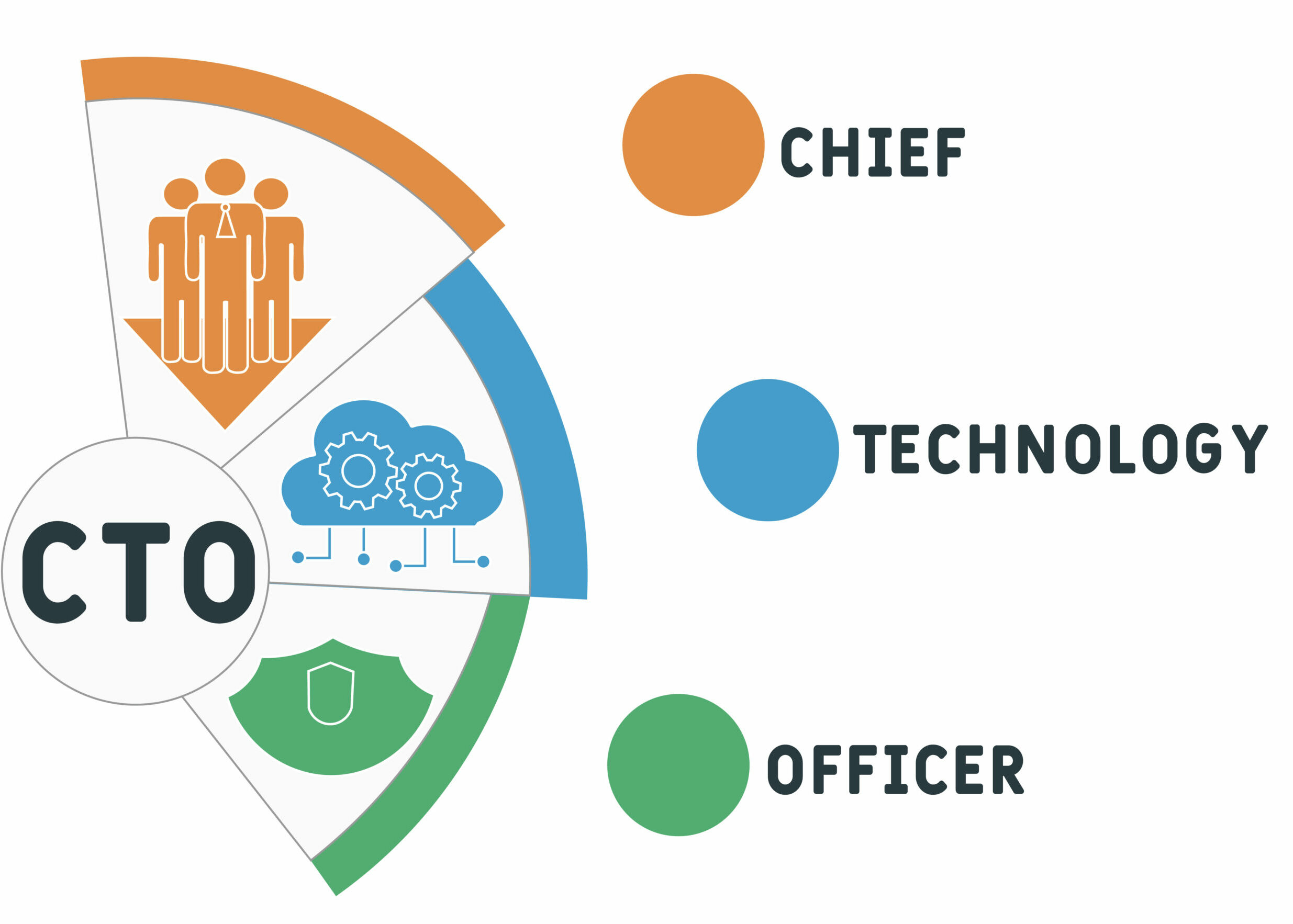The role of a Chief Technology Officer (CTO) is pivotal in today's rapidly evolving technological landscape. As businesses increasingly rely on technology to drive innovation and maintain competitive advantage, the CTO stands at the helm, navigating these complex waters. This role is not just confined to overseeing IT operations; it extends to strategic planning, fostering innovation, and aligning technology with business goals. Understanding the role of CTO is essential for organizations aiming to leverage technology effectively and stay ahead in the market.
In the digital age, the CTO is often seen as the bridge between the executive suite and the technical teams. This position requires a unique blend of technical expertise, leadership skills, and strategic vision. A CTO must be adept at understanding both the technical and business aspects of the company to ensure that technological resources are used efficiently and effectively. This dual responsibility highlights the necessity for a CTO to be not only a tech expert but also a business strategist.
The expanding role of the CTO reflects the growing importance of technology in business. From driving digital transformation initiatives to ensuring cybersecurity, the CTO's responsibilities are multifaceted and crucial to a company's success. As technology continues to evolve, so does the role of the CTO, necessitating continuous learning and adaptation. This article delves into the various facets of the CTO's role, providing a comprehensive understanding of their responsibilities, challenges, and the impact they have on an organization's growth and innovation.
Table of Contents
Definition and Significance of a CTO
The Chief Technology Officer (CTO) is a senior executive responsible for overseeing the technological and digital needs of an organization. This role is crucial in ensuring that the company's technology strategy aligns with its business goals. The CTO is tasked with driving technological innovation and ensuring that the organization remains competitive in the digital landscape. By understanding the role of CTO, companies can better leverage technology as a strategic asset.
Evolution of the CTO Role
The role of the CTO has evolved significantly over the years. Initially, CTOs were primarily focused on managing IT infrastructure and operations. However, with the rapid pace of technological advancements, the role has expanded to include strategic planning, innovation management, and digital transformation. Today's CTOs are expected to be visionary leaders who can anticipate technological trends and guide their organizations accordingly.
Key Responsibilities of a CTO
CTOs have a wide range of responsibilities that include developing the company's technology strategy, overseeing IT operations, and ensuring cybersecurity. They are also responsible for fostering a culture of innovation and collaborating with other executives to integrate technology into business processes. By understanding the role of CTO, organizations can better appreciate the critical functions that this position encompasses.
Technical Expertise and Innovation
A CTO must possess a deep understanding of various technologies and their applications. This expertise enables them to drive innovation within the company, explore new technological opportunities, and implement cutting-edge solutions. The CTO's role in fostering innovation is vital for maintaining a competitive edge in the market.
Strategic Planning and Vision
Strategic planning is a core responsibility of the CTO. They must develop a long-term vision for the company's technology landscape, aligning it with business objectives. This involves identifying emerging technologies that can benefit the organization and creating roadmaps for their implementation.
Leadership and Management
CTOs are leaders who must inspire and guide their teams. Effective management skills are essential for overseeing technical teams, managing projects, and ensuring that technology initiatives are executed successfully. Leadership is a critical aspect of the CTO's role, as they must cultivate a collaborative and innovative culture within the organization.
CTO and Business Alignment
Aligning technology with business goals is a key function of the CTO. This involves collaborating with other executives to understand the company's strategic objectives and ensuring that technological initiatives are in sync with these goals. The CTO must have a strong business acumen to effectively bridge the gap between technology and business.
Role in Digital Transformation
Digital transformation is a significant focus for many organizations, and the CTO plays a central role in leading these initiatives. By leveraging digital technologies, the CTO helps streamline operations, enhance customer experiences, and drive business growth. This transformative role requires a deep understanding of both technology and business processes.
Importance of Cybersecurity
In an age where cyber threats are increasingly sophisticated, ensuring cybersecurity is a critical responsibility of the CTO. They must develop robust security strategies to protect the organization's data and systems, as well as educate employees on best practices for maintaining security. Cybersecurity is a top priority for CTOs as it safeguards the company's assets and reputation.
Challenges Faced by CTOs
CTOs encounter numerous challenges, ranging from managing technological change to addressing budget constraints. They must also navigate the complexities of integrating new technologies while maintaining existing systems. These challenges require strategic thinking and adaptability to overcome and drive the organization forward.
Skills and Qualifications Required
Becoming a successful CTO requires a combination of technical expertise, leadership abilities, and strategic vision. Essential skills include proficiency in various technologies, project management, strategic planning, and strong communication. Qualifications typically include a background in computer science or engineering, along with extensive experience in technology leadership roles.
Future Trends for CTOs
The role of the CTO is continuously evolving, influenced by technological advancements and changing business needs. Future trends include a greater emphasis on artificial intelligence, data analytics, and sustainability. CTOs must stay abreast of these trends to ensure their organizations remain competitive and innovative.
How to Become a Successful CTO
To become a successful CTO, individuals should focus on building a strong foundation in technology and developing leadership skills. Gaining experience in various technology roles, pursuing continuous learning opportunities, and networking with industry professionals are also important steps. A successful CTO is one who can effectively align technology with business goals and inspire their team to achieve success.
Frequently Asked Questions
- What is the primary role of a CTO?
- How does a CTO differ from a CIO?
- What skills are essential for a CTO?
- How does a CTO contribute to digital transformation?
- What challenges do CTOs face?
- How can one become a CTO?
The primary role of a CTO is to oversee the technological strategy of a company, ensuring it aligns with business goals and drives innovation.
While both roles involve overseeing technology, a CTO focuses more on innovation and technological development, whereas a CIO is typically more concerned with managing IT operations and infrastructure.
Key skills for a CTO include technical expertise, strategic planning, leadership, and strong communication abilities.
A CTO leads digital transformation initiatives by implementing new technologies that enhance business processes and improve customer experiences.
CTOs face challenges such as managing technological change, budget constraints, and ensuring cybersecurity in an ever-evolving digital landscape.
To become a CTO, individuals should build a strong technical foundation, develop leadership skills, gain experience in technology roles, and engage in continuous learning.
Conclusion
In conclusion, the role of a CTO is critical in shaping the technological landscape of an organization. By providing strategic direction, fostering innovation, and ensuring cybersecurity, CTOs play a vital part in driving business growth and maintaining a competitive edge. As technology continues to evolve, the responsibilities and challenges faced by CTOs will also change, necessitating adaptability and continuous learning. By understanding the role of CTO, organizations can better leverage technology to achieve their strategic objectives and thrive in the digital age.
For more insights on the evolving role of technology leaders, you can visit Harvard Business Review's Technology Section.
Article Recommendations


ncG1vNJzZmibkafBprjMmqmknaSeu6h6zqueaKGTpLuqr4yamq2qlajApr%2BMqJ1moJ%2BhubrDzqibaK2embKzv9OapZ2hnpx6tbTEZqmopJVivKd5wq2mZ6Ckork%3D